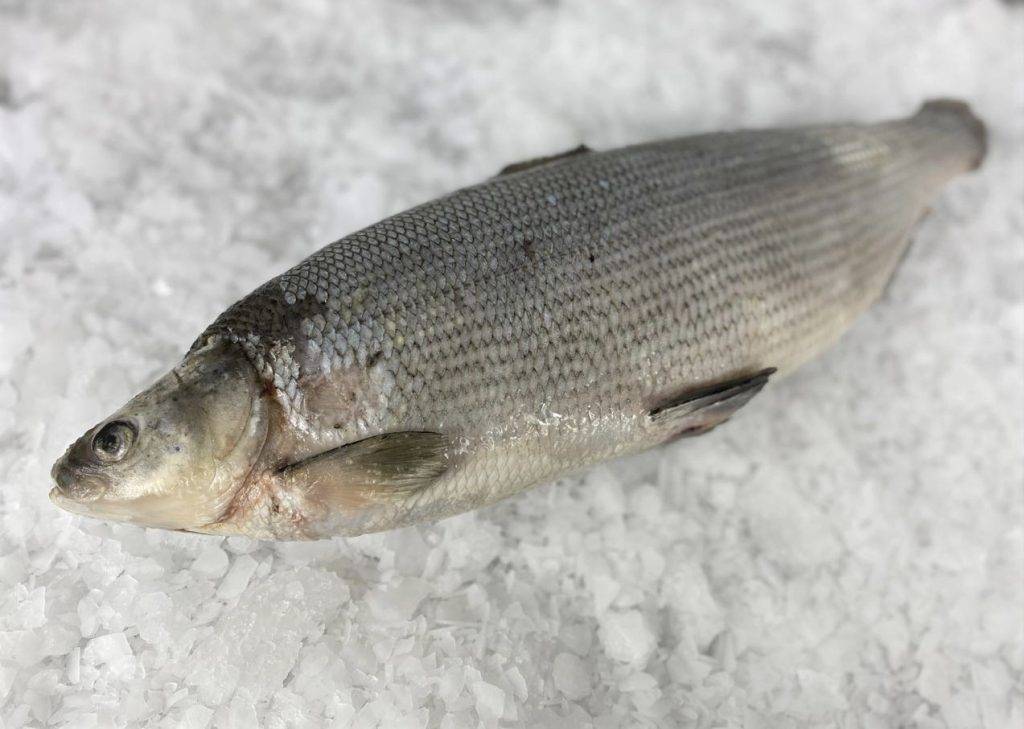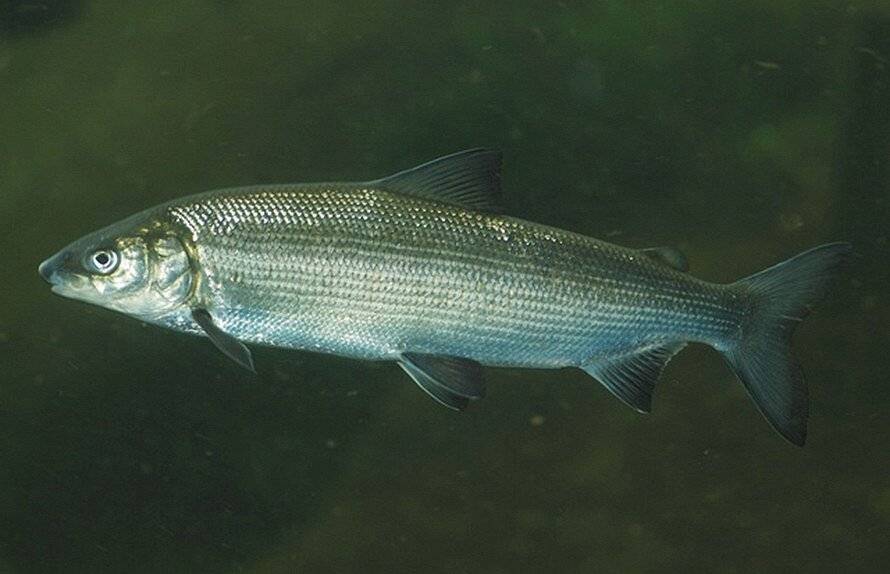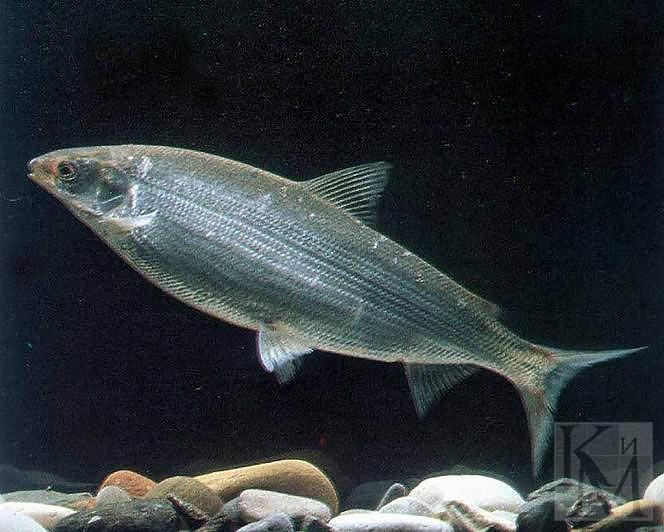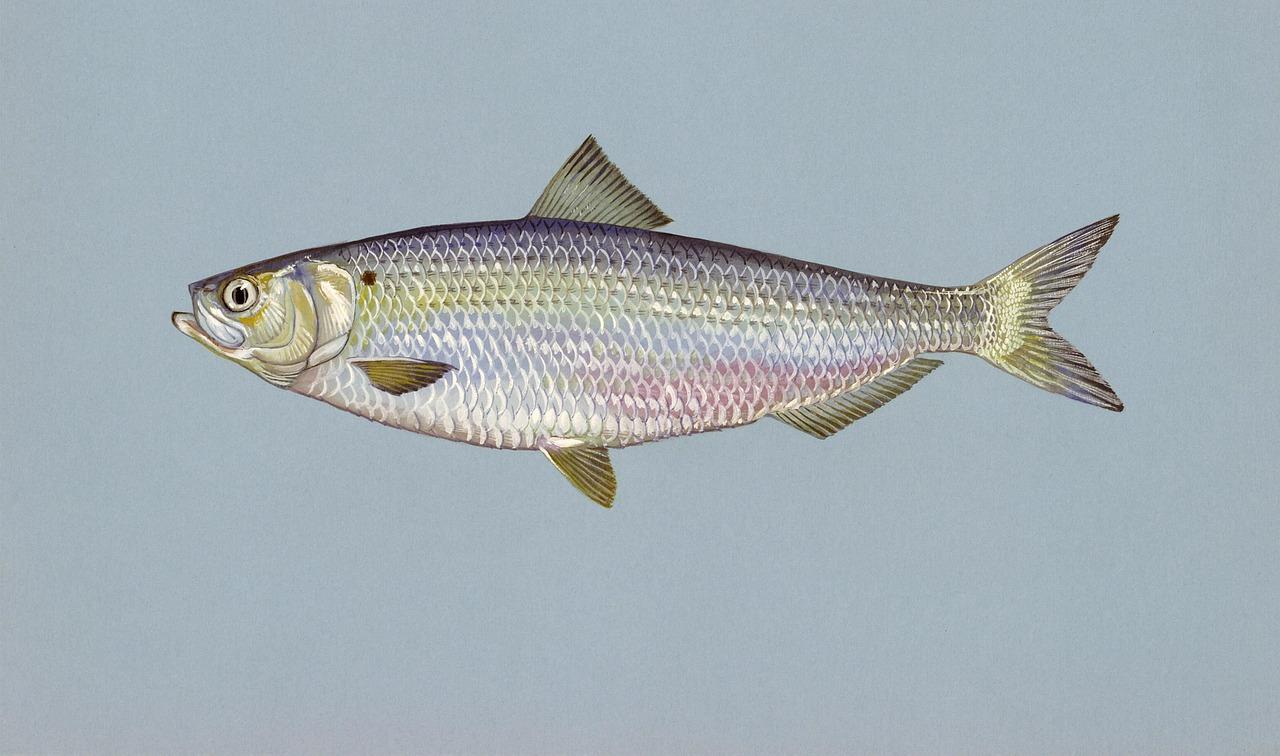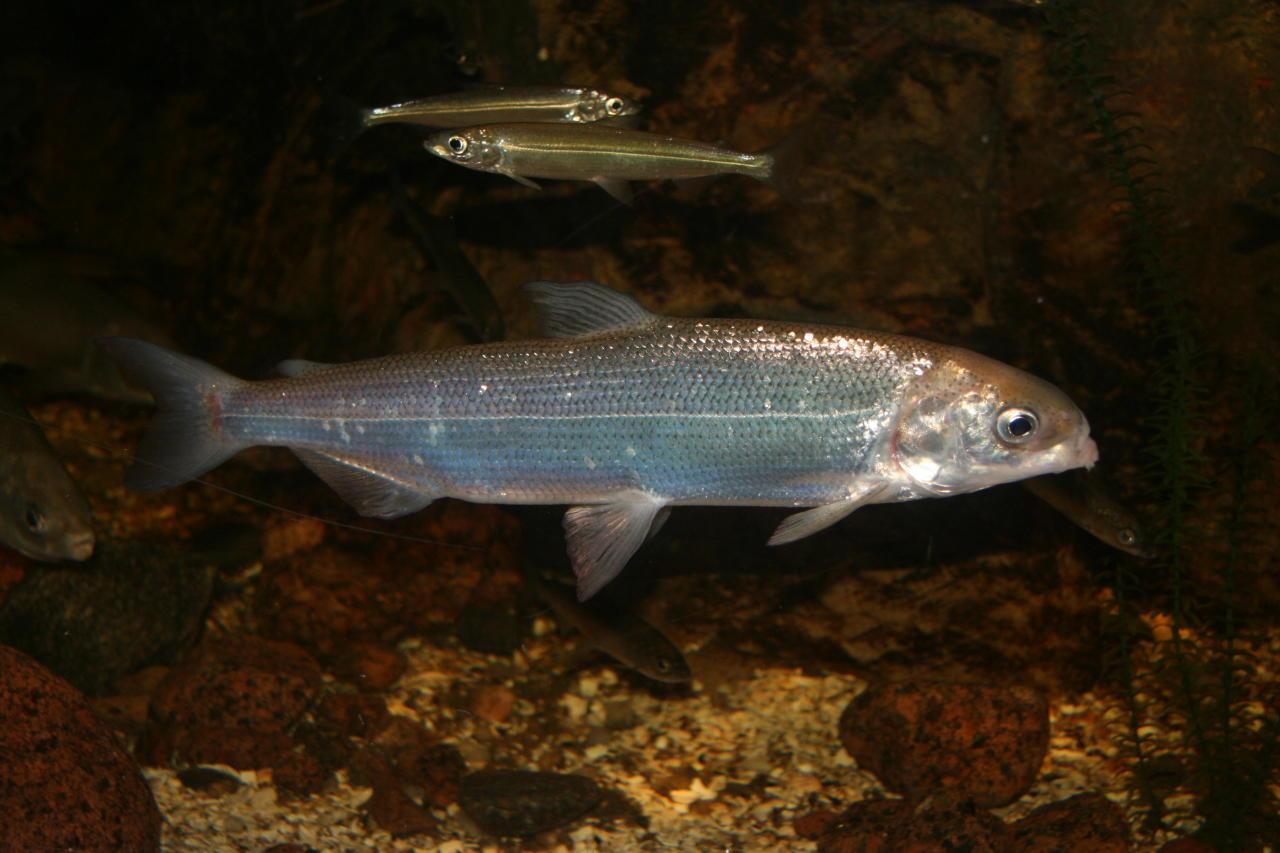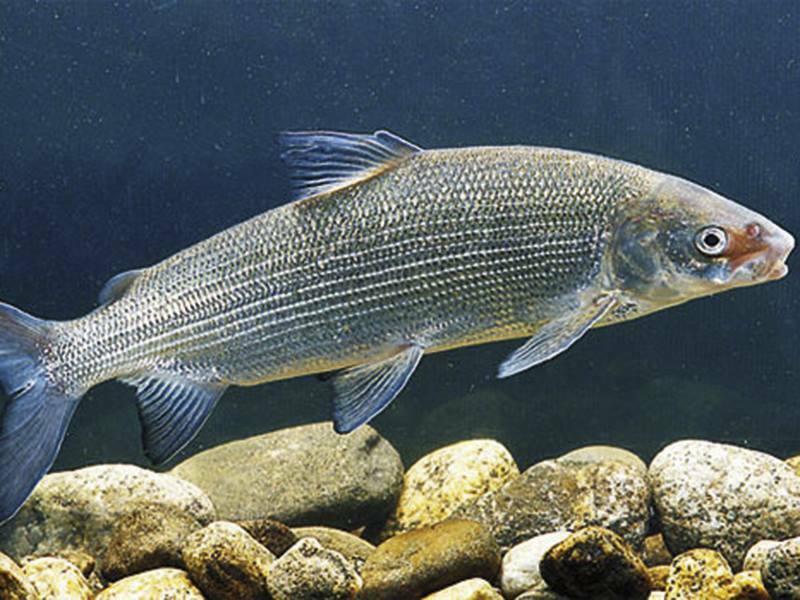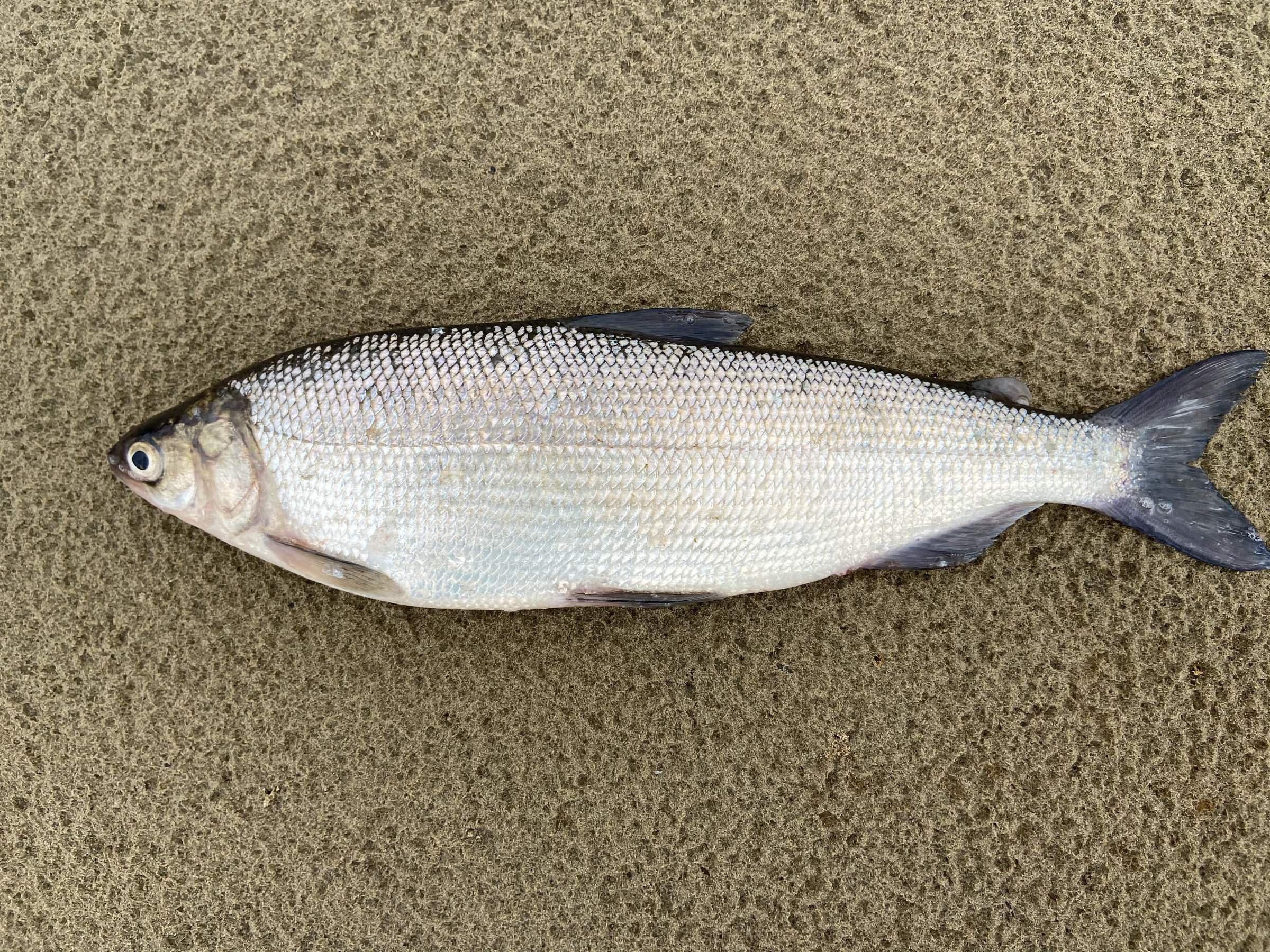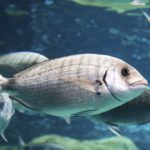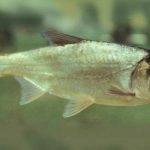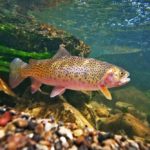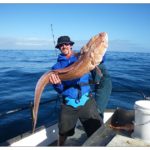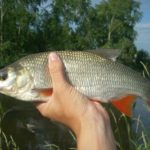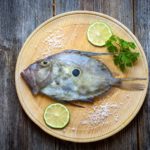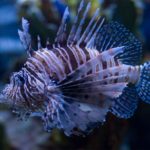Peled (also known as peled) is a species of freshwater fish that is both caught in large quantities in the wild and farmed in aquaculture. Its pulp has an excellent taste and is a good source of high-quality protein, along with beneficial minerals that help maintain normal body functioning.
- Description of the fish
- Appearance
- Nutrition
- Habitat
- How and when does it reproduce?
- Types of fish
- The nutritional value
- Beneficial features
- About peled caviar
- Tips for fishermen
- Choosing a fishing spot
- When is the best time to catch
- What bait to use
- Recommendations for working with fish
- How to store it
- How to choose fish
- Cooking recipes
- In the oven
- Fried peled in a frying pan
Description of the fish
Peled belongs to the Salmon family. Reaches a length of 40-55 cm and a weight of 2.5-5 kg. It is found in rivers, making long feeding and seasonal migrations. Can also be found in northern lakes and sections of slow-flowing rivers. This type of fish quickly adapts to changing water temperatures, but prefers cooler conditions (not higher than 22°C).
These freshwater creatures usually stay in groups, occasionally venturing into the slightly brackish waters of river mouths, but never venturing out to sea.
Appearance
The peled looks laterally compressed, its body is high, oval in shape with silvery scales that fit tightly together. Its back rises steeply behind its head and is almost completely black. In addition, the head and dorsal fin are dotted with small black spots. Unlike other salmon species, the peled has more gill processes (49-68), and its upper jaw is slightly longer than the lower jaw.
During reproduction, the color of the fish changes. The back and head take on a blue-green hue. When a fish goes to spawn, white tubercles form on its sides; in males they are more pronounced. Locals call them scattering pearls.
Nutrition
In autumn and winter, peled feed mainly on zooplankton, mollusks and small crustaceans. In summer, it consumes mainly insect larvae and pupae; large specimens can feed on caviar, fry of roach, perch and crucian carp.
When spawning migration or spawning occurs, the fish either do not eat or consume only a small amount of food. In Russia and other countries where this fish is caught, its catch is reduced during this period, waiting until it “gains weight” again.
Habitat
Cheese is found in abundance in the rivers of the Arctic Ocean, from the rivers of the Komi Republic to the cold Chukchi lakes. It can also be found in abundance in the Ob and Irtysh rivers. In addition, it is also present in the Khabarovsk Territory in the area of the Amur River.
This fish likes to live in rivers and lakes with slow-moving currents, where there are two types of whitefish - common and dwarf. The difference in the preferences of young and old fish is that juveniles tend to stay near the water's edge, while adults will swim alone in the depths.
As soon as the ice melts in the spring, peled swim to the floodplains at the bottom of rivers and up their tributaries in search of food. When the water level drops back to normal, the fish migrate back to their normal habitats.
How and when does it reproduce?
The onset of reproductive capacity is directly related to environmental factors and primarily to the amount of available food. As a rule, the cheese is capable of reproduction from the age of four.
When ice sets in the lakes in November, spawning begins; whereas in rivers it occurs from September to December, when the water temperature does not rise above 8 degrees Celsius. Large individuals set off on the spawning journey earlier than small ones; these large fish rise upstream and after spawning manage to swim down the river, while small ones remain at the spawning site for the winter. During this period, fish are very poorly caught, as they reduce their nutrition to a minimum.
During spawning, females produce from 9,000 to 85,000 eggs, which are one and a half millimeters in diameter. Pairs create their spawning grounds in places with a mixture of pebbles and sand at the outlet of underground springs, where the water does not freeze.After the ice melts, after about five months, the 8mm larvae hatch and consume nutrients from their yolk sac for a few days before moving on to feed on zooplankton.
Types of fish
Depending on their habitat and size, there are three types of peled: river, lake and dwarf.
The first one grows quickly and becomes sexually mature by the age of three. Spawns in places where there is a strong current. The second species, as the name implies, lives in tundra or taiga lakes and reaches 50 cm in length and 2 kg of body weight, with a maximum lifespan of 13 years.
The nutritional value
The energy value and calorie content of 100 grams of peled fish fillet depends on how it is prepared. However, in its raw form, the total energy value of 100 grams of peled fillet is approximately 118 kilocalories (kcal).
Despite the low amount of fat in peled, it is a good source of protein and many other beneficial nutrients. If peled fish is cooked with oil or other ingredients, its calorie content may increase. Therefore, when preparing peled fish, it is important to consider all the ingredients and cooking methods in order to control the calorie content of the dish.
Beneficial features
Peled fish fillet is a valuable source of many useful substances. It is rich in protein, iron, zinc, phosphorus and B vitamins. Read more about some of them:
- Protein: Peled fillet is rich in high quality protein, which is the main building material for tissues and muscles. 100 grams of peled fillet contain about 20 grams of protein.
- Iron: peled fillet is an excellent source of iron, necessary for hematopoiesis and maintaining immunity. 100 grams of peled fillet contains about 1.3 mg of iron.
- Phosphorus: Peled fillet is rich in phosphorus, which is essential for healthy bones and teeth, as well as for the normal functioning of cells and tissues. 100 grams of peled fillet contains about 240 mg of phosphorus.
- B vitamins: peled fillet contains many B vitamins, which are necessary for the normal functioning of the nervous system and metabolism. For example, 100 grams of peled fillet contains about 0.4 mg of vitamin B1 (thiamine) and 0.5 mg of vitamin B2 (riboflavin).
- Omega-3 fatty acids: Peled fish contains high levels of omega-3 fatty acids, which are important for heart and vascular health, lowering blood cholesterol and preventing the development of inflammatory diseases. The omega-3 acids in peled fillets are found in fatty tissue, so to get the maximum benefit from them, it is best to choose fish with a high fat content.
Curd meat has a number of positive effects on the human body, including:
- improving the functioning of the digestive tract, skin and mucous membranes;
- regulation of blood pressure;
- maintaining optimal acid-base balance;
- strengthening bones and tooth enamel;
- normalization of glucose levels;
- help in the fight against depression;
- relieves stomach cramps and protects against toxins.
In addition, it can slow down the aging process, increase endurance, fight chronic fatigue and improve sleep quality. Moreover, peled supports the health of the heart muscle and reproductive system, is useful for weight loss, as well as for arthritis and arthrosis.
About peled caviar
The nutritional value of raw fish caviar may vary depending on the manufacturer and method of preparation, however, on average, 100 grams of peled caviar contains:
- Calories: approximately 250 kilocalories (kCal).
- Proteins: 28 g.
- Fat: 16 g (including 2.4 g Omega-3 fatty acids).
- Carbohydrates: 0 g.
- Cholesterol: 115 mg.
- Sodium: 850 mg.
- Potassium: 280 mg.
Peled fish roe also contains antioxidants, which can help protect cells from damage caused by free radicals. Consuming peled fish roe can help improve heart, brain and eye health, as well as maintain healthy skin and hair.
Peled fish roe is a rich source of protein and healthy Omega-3 fatty acids. However, it also contains high amounts of cholesterol and sodium, so people with high cholesterol or hypertension are advised to consume caviar with caution and in moderation.
A simple recipe that can be used for salting peled fish roe at home.
Ingredients:
- 500 grams of fresh caviar.
- 2 tablespoons salt
- 2 tablespoons sugar.
- Peppercorns to taste.
- Bay leaf (to taste).
Instructions:
- Prepare fresh caviar by cleaning it from films and fatty streaks.
- Mix salt, sugar and peppercorns.
- Sprinkle the mixture of salt and sugar evenly over the entire surface of the caviar and massage it well.
- Transfer the caviar to a container, press it on top with a light weight (for example, a board on which you place a weight) and leave it in the refrigerator for a day.
- The next day, check if there is liquid in the container; if there is, drain it. After this, press the caviar again and leave it in the refrigerator for another day.
- Repeat the process of pressing the eggs and draining any liquid if any appears for 3-4 days until the eggs are ready.
- Ready caviar can be stored in the refrigerator for up to two weeks.
Important: When working with raw fish, special care and hygiene must be observed to avoid contamination by bacteria and other harmful microorganisms.
Tips for fishermen
The cheesefish is a very wary fish, so it is difficult to get close enough to catch it. To successfully catch peled, you will need the right equipment and long casts. When it bites, there should be a quick but precise hook, without any delay. The lips of the cheese are soft, so the fish will not break off if the hook manages to go deep. Fishermen especially like to catch large specimens, since they offer quite strong resistance.
Choosing a fishing spot
Schooling peled prefer areas with strong currents and dense vegetation near the coastline. Sea waters are not for cheese.
When is the best time to catch
River cheese can be found and caught throughout the year, regardless of the time of day and weather conditions. However, during spawning, the fish consumes little food, so it is less catchable.
What bait to use
In summer, cheesecake is caught with a float rod, which has a 5-meter long rod and a light float that keeps the bait afloat. Use a size 4 or 5 hook with 0.2mm monofilament line.
In order to attract fish, the bait must be in motion.When fly fishing, dry sinking flies are used as natural baits; cheesecakes usually prefer bloodworms, earthworms, mosquitoes, horse flies, amphipods and sliced shellfish.
Winter fishing is different in that at depth the pellet sinker is attached at a distance of 70 cm from the hook. Before fishing, a handful of dried and frozen insects are scattered into the hole; An additional 1-2 meters of ice around the hole is covered with snow. At this moment, the bait can be cast close to the surface (6-10 cm from the lower edge of the ice). If there are no bites, then the bait should be kept at a distance of one meter from the bottom.
Recommendations for working with fish
The cheese has relatively few bones, including only the spine, ribs and the head itself. This makes it easy to fillet the fish without worrying about small bones getting in the way. The backbone and heads are often used in broths and sauces, and the flesh is typically used in gourmet dishes.
How to store it
Peled can be refrigerated on ice for two days or frozen to extend shelf life up to four months. Gutting fish before freezing will help preserve it even better and longer. A salted or hot smoked carcass can last up to 10 days if stored at a temperature of 0-2°C.
How to choose fish
Finding cheese in a regular grocery store is quite difficult. It is usually sold in specialty stores near fishing areas and in online stores. Prices depend on the condition and size of the fish, as well as the area. In the regions, a fresh frozen carcass costs from 220 rubles, while in the capital it costs up to 550 rubles. At the same time, dried and smoked peled costs twice as much.
Choosing fresh peled in the store is not an easy task, but there are a few signs to look out for:
- Smell: Fresh fish should have a light and fresh smell of the sea. If the smell is strong, pungent or has an unpleasant tint, then this is a sign that the carcass is stale.
- Eyes: Should be clear, prominent and shiny, without cloudiness or protrusion. If they are dull, sunken or lifeless, then this is a bad sign.
- Skin: shiny, without dryness or mealiness. If the skin is dull, dry or has a white film, you should refuse the purchase.
- Gills: Should be red, moist and odorless. If they are gray, dry or have an unpleasant odor, then the product is spoiled.
- Meat quality: fillet should be firm, not stick to your hands and show no signs of decomposition.
- Packing Date: Please note the packing date. If the expiration date has passed, consuming such a product is life-threatening.
If you have the opportunity to choose fish at the market, then it is best to buy carcasses lying on ice in places where the fish are cooled immediately before sale. This guarantees the freshness and quality of the product.
Cooking recipes
It is preferable to dry curds in spring or autumn, when the carcasses are fattier. Start by salting them. Place a layer of salt on the bottom of an enamel pan or basin. Sprinkle the white crystals generously on both sides of each fish and place them back-to-back side down in consecutive rows. Cover with a lid and press down with something on top until the moisture starts to come out. Leave the cheese in a cool place for 2-12 days depending on its size.
Once the peled is firm, rinse the carcasses and let them soak in a bowl of cold water for 4-5 hours.If you skip this step, the fish will be dry, over-salted, and a white film will appear on it, which will quickly oxidize. After soaking, remove all mucus from the carcasses, then hang or lay them outside to dry (if necessary in gauze), depending on weather conditions and the size of the fish.
Smoked peled, oddly enough, is good for the heart, brain and digestive system. It can strengthen the immune system, bones and prevent tooth decay, and also promotes metabolism and preserves youthful skin and hair.
Cold smoking allows you to keep most of the beneficial components unchanged, while hot smoking reduces the cooking time, but kills the beneficial substances. It is recommended not to consume smoked cheese more than once a week due to carcinogens contained in fish smoke that can cause cancer.
In the oven
Recipe for cooking peled fish in the oven.
Here's what you'll need:
- Peled fish (about 1 kg)
- 1 lemon
- 2 cloves garlic
- 2-3 sprigs fresh rosemary
- 2 tablespoons olive oil
- Salt and pepper to taste
Instructions:
- Preheat the oven to 200 degrees Celsius.
- Prepare the fish, rinse it inside and out, remove the head, tail and entrails. Be sure to remove scales and sharp bones.
- Cut the lemon into thin slices and finely chop the garlic.
- Place a few lemon slices, garlic and rosemary inside the fish.
- Rub the fish with olive oil and salt and pepper to taste.
- Place parchment paper or aluminum foil on a baking tray, then place the fish on it.
- Place the pan in the oven and bake the fish for about 20-25 minutes, depending on the size of the fish.
- You can check the readiness of the fish by cutting it at the thickest point.The meat should be white and well cooked.
Serve the peled fish hot with extra lemon wedges and fresh rosemary on top.
Fried peled in a frying pan
Ingredients:
- Peled fish (about 1 kg).
- 1 egg.
- 1 cup breadcrumbs or breading mixture.
- 1/4 cup flour.
- 2 tablespoons of vegetable oil.
- Salt and pepper to taste.
Instructions:
- Prepare the fish.
- Break the egg into a bowl and beat it with a fork.
- Place breadcrumbs or breading mixture in another bowl.
- Pour flour into a third bowl and salt it.
- Heat a frying pan over medium heat and add vegetable oil.
- Rub the fish with oil and salt and pepper it to taste.
- Dip each piece of fish first in flour, then in egg and finally in breadcrumbs or breading mixture. Bread the fish well on all sides.
- Place the fish in the pan and fry for 3-4 minutes on each side until the breading is golden and crispy.

